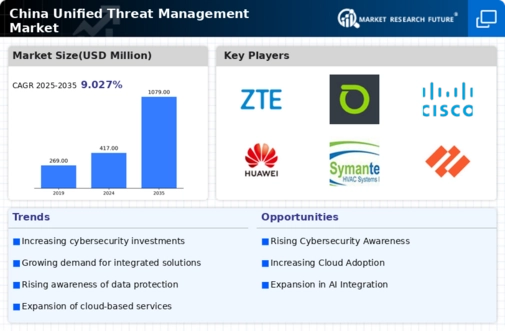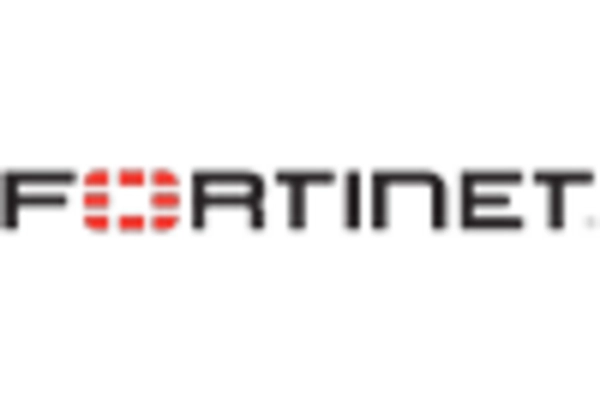Regulatory Compliance Pressures
In China, the regulatory landscape surrounding data protection and cybersecurity is evolving rapidly, creating a significant driver for the unified threat-management market. The implementation of laws such as the Cybersecurity Law and the Personal Information Protection Law mandates organizations to adopt stringent security measures. Compliance with these regulations is not merely a legal obligation but also a competitive necessity. Companies that fail to comply may face hefty fines and reputational damage. As a result, there is a growing reliance on unified threat-management solutions that can streamline compliance processes and provide comprehensive reporting capabilities. The market is expected to expand as organizations invest in technologies that ensure adherence to regulatory requirements while protecting sensitive data.
Growing Cybersecurity Threat Landscape
The increasing frequency and sophistication of cyber threats in China is a primary driver for the unified threat-management market. As organizations face a myriad of attacks, including ransomware, phishing, and advanced persistent threats, the demand for comprehensive security solutions intensifies. In 2025, it is estimated that cybercrime could cost the Chinese economy over $1 trillion, highlighting the urgent need for effective threat management. Companies are compelled to adopt unified threat-management solutions to safeguard their assets and maintain operational integrity. This trend is further fueled by the rise of remote work and digital transformation, which expand the attack surface. Consequently, the unified threat-management market is poised for substantial growth as businesses seek to mitigate risks and enhance their security posture.
Rising Awareness of Cybersecurity Risks
There is a notable increase in awareness regarding cybersecurity risks among businesses in China, which serves as a catalyst for the unified threat-management market. As high-profile data breaches and cyber incidents make headlines, organizations are becoming more proactive in addressing their security vulnerabilities. This heightened awareness is prompting companies to invest in comprehensive security solutions that provide real-time threat detection and response capabilities. In 2025, it is estimated that the cybersecurity market in China will grow at a CAGR of over 15%, reflecting the urgency with which organizations are approaching their security strategies. The unified threat-management market is likely to benefit from this trend as businesses seek to implement holistic security frameworks that encompass various threat vectors.
Demand for Integrated Security Solutions
The demand for integrated security solutions is a significant driver for the unified threat-management market in China. Organizations are increasingly recognizing the limitations of disparate security tools that operate in silos. The need for a cohesive security strategy that provides visibility and control across the entire IT environment is becoming paramount. Unified threat-management solutions offer a centralized platform that consolidates various security functions, such as firewall, intrusion detection, and antivirus, into a single interface. This integration not only simplifies management but also enhances the effectiveness of security measures. As businesses strive for operational efficiency and improved security outcomes, the unified threat-management market is expected to experience robust growth, driven by the need for comprehensive and integrated security solutions.
Increased Investment in Digital Transformation
The ongoing digital transformation across various sectors in China is driving the demand for unified threat-management solutions. As businesses increasingly adopt cloud services, IoT devices, and mobile applications, the complexity of their IT environments grows. This complexity necessitates robust security measures to protect against emerging threats. In 2025, it is projected that the digital transformation market in China will reach approximately $1 trillion, with a substantial portion allocated to cybersecurity solutions. Organizations are recognizing that traditional security measures are insufficient in this new landscape, leading to a surge in the adoption of unified threat-management systems. These systems offer integrated security features that address the multifaceted challenges posed by digital transformation.

















Leave a Comment